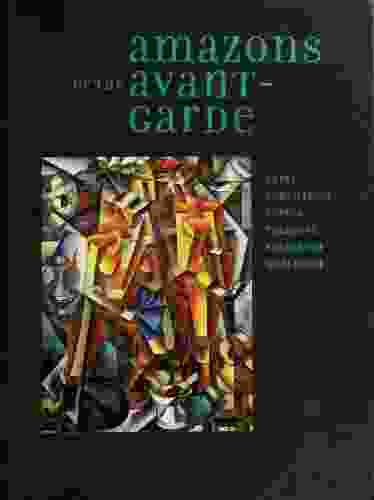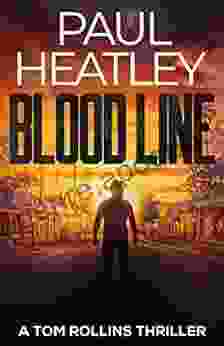Corporate Policing, Yellow Unionism, and Strikebreaking: Controlling Labor in the United States, 1890-1930

The late 19th and early 20th centuries were a time of great industrial growth and unrest in the United States. As corporations grew in power, they increasingly sought to control their workforce and suppress labor organizing. This led to the rise of corporate policing, yellow unionism, and strikebreaking.
Corporate policing involved the use of private security forces to protect company property and suppress labor activities. Yellow unionism involved the creation of company-dominated unions that were designed to undermine legitimate labor organizations. Strikebreaking involved the use of violence and intimidation to prevent workers from striking.
5 out of 5
| Language | : | English |
| File size | : | 6578 KB |
| Screen Reader | : | Supported |
| Print length | : | 298 pages |
| X-Ray for textbooks | : | Enabled |
These tactics were used by corporations to maintain control over their workforce and prevent the spread of unionism. They were often effective in suppressing labor organizing, but they also led to increased violence and unrest.
The Rise of Corporate Policing
The rise of corporate policing in the United States can be traced back to the late 19th century. As corporations grew in size and power, they increasingly sought to protect their property and suppress labor activities. This led to the creation of private security forces that were used to guard company property and break up strikes.
One of the most notorious examples of corporate policing was the Pinkerton National Detective Agency. Founded in 1850, the Pinkertons were hired by corporations to provide security and strikebreaking services. The Pinkertons were known for their use of violence and intimidation, and they were often involved in bloody confrontations with strikers.
Another example of corporate policing was the use of company guards. Many corporations hired their own security forces to protect their property and suppress labor activities. These company guards were often armed and were given the authority to use force to protect company property.
The Rise of Yellow Unionism
Yellow unionism is a term used to describe company-dominated unions that are designed to undermine legitimate labor organizations. These unions are often created by corporations in an effort to prevent workers from joining real unions.
Yellow unions typically have no real power to represent workers and they often serve as a tool for management to control the workforce. These unions may sign contracts that are favorable to the corporation and they may discourage workers from engaging in strikes or other forms of protest.
One example of a yellow union is the United Mine Workers of America (UMWA). The UMWA was founded in 1890 as a legitimate labor organization. However, over time, the UMWA became increasingly dominated by the coal industry. The UMWA signed contracts that were favorable to the coal companies and it discouraged workers from engaging in strikes.
The Rise of Strikebreaking
Strikebreaking is the use of violence and intimidation to prevent workers from striking. This tactic was often used by corporations to break up strikes and prevent workers from winning their demands.
One of the most notorious examples of strikebreaking was the use of the National Guard. The National Guard is a state-run military force that is often called upon to quell civil unrest. In the late 19th and early 20th centuries, the National Guard was often used to break up strikes and prevent workers from winning their demands.
Another example of strikebreaking was the use of hired thugs. Many corporations hired thugs to intimidate and attack strikers. These thugs were often armed and they were given the authority to use violence to break up strikes.
The Impact of Corporate Policing, Yellow Unionism, and Strikebreaking
The rise of corporate policing, yellow unionism, and strikebreaking had a significant impact on the labor movement in the United States. These tactics were used by corporations to suppress labor organizing and maintain control over their workforce. They were often effective in suppressing labor organizing, but they also led to increased violence and unrest.
The use of corporate policing, yellow unionism, and strikebreaking led to a decline in union membership in the United States. In 1900, about 20% of the American workforce was unionized. By 1930, that number had declined to about 10%.
The decline in union membership made it more difficult for workers to win their demands and improve their working conditions. This led to a decline in wages and benefits for American workers.
The rise of corporate policing, yellow unionism, and strikebreaking in the United States was a major setback for the labor movement. These tactics were used by corporations to suppress labor organizing and maintain control over their workforce. They were often effective in suppressing labor organizing, but they also led to increased violence and unrest.
The decline in union membership in the United States has had a significant impact on the American economy and society. It has made it more difficult for workers to win their demands and improve their working conditions. This has led to a decline in wages and benefits for American workers.
The legacy of corporate policing, yellow unionism, and strikebreaking continues to cast a long shadow over the American labor movement. These tactics are a reminder of the lengths to which corporations will go to protect their profits and maintain control over their workforce.
5 out of 5
| Language | : | English |
| File size | : | 6578 KB |
| Screen Reader | : | Supported |
| Print length | : | 298 pages |
| X-Ray for textbooks | : | Enabled |
Do you want to contribute by writing guest posts on this blog?
Please contact us and send us a resume of previous articles that you have written.
 Book
Book Novel
Novel Page
Page Chapter
Chapter Text
Text Story
Story Genre
Genre Reader
Reader Library
Library Paperback
Paperback E-book
E-book Magazine
Magazine Newspaper
Newspaper Paragraph
Paragraph Sentence
Sentence Bookmark
Bookmark Shelf
Shelf Glossary
Glossary Bibliography
Bibliography Foreword
Foreword Preface
Preface Synopsis
Synopsis Annotation
Annotation Footnote
Footnote Manuscript
Manuscript Scroll
Scroll Codex
Codex Tome
Tome Bestseller
Bestseller Classics
Classics Library card
Library card Narrative
Narrative Biography
Biography Autobiography
Autobiography Memoir
Memoir Reference
Reference Encyclopedia
Encyclopedia Sebastian Mallaby
Sebastian Mallaby Omer Tekdemir
Omer Tekdemir Susan Rose Ackerman
Susan Rose Ackerman Walter Russell Mead
Walter Russell Mead Revised Ed Edition Kindle Edition
Revised Ed Edition Kindle Edition Michelle Jacoby
Michelle Jacoby Thomas Hardy
Thomas Hardy Pablo J Boczkowski
Pablo J Boczkowski Lauren Barnes
Lauren Barnes Micere Keels
Micere Keels Oliver Demille
Oliver Demille Mary Matthews
Mary Matthews Melanie Spanswick
Melanie Spanswick Michael W
Michael W Kenley Davidson
Kenley Davidson Robert Mckee
Robert Mckee S Leigh Savidge
S Leigh Savidge Wide Ocean
Wide Ocean Sherry Cormier
Sherry Cormier Torria Davis
Torria Davis
Light bulbAdvertise smarter! Our strategic ad space ensures maximum exposure. Reserve your spot today!

 Leo MitchellUnveiling the Timeless Love and Betrayal: The Alluring Tale of "The Romance...
Leo MitchellUnveiling the Timeless Love and Betrayal: The Alluring Tale of "The Romance...
 Desmond FosterOnce Upon a Time...Black & White: A Journey Through the Timeless Tales of...
Desmond FosterOnce Upon a Time...Black & White: A Journey Through the Timeless Tales of... Alan TurnerFollow ·18.7k
Alan TurnerFollow ·18.7k Greg CoxFollow ·2.4k
Greg CoxFollow ·2.4k Anton ChekhovFollow ·12.5k
Anton ChekhovFollow ·12.5k Isaac MitchellFollow ·8.8k
Isaac MitchellFollow ·8.8k Steven HayesFollow ·2.4k
Steven HayesFollow ·2.4k Guillermo BlairFollow ·12.8k
Guillermo BlairFollow ·12.8k Jeff FosterFollow ·7.1k
Jeff FosterFollow ·7.1k Octavio PazFollow ·19.8k
Octavio PazFollow ·19.8k

 Finn Cox
Finn CoxCarmen Suite For Flute Quartet (G Alto Flute) ( Carmen...
Experience the Magic of...

 Andy Cole
Andy ColeUncover Hidden Truths: A Comprehensive Guide to Detecting...
: The Silent...

 Ken Simmons
Ken SimmonsUnleash Your Potential: Transform Frustration and...
Are you tired of feeling...

 Rick Nelson
Rick NelsonHard To Kill: A Gripping Thriller That Will Keep You on...
Tom Rollins is a...

 Ivan Turner
Ivan TurnerUnleash the Power of Your Breath: Discover Breath...
In the tapestry of life, where stress and...
5 out of 5
| Language | : | English |
| File size | : | 6578 KB |
| Screen Reader | : | Supported |
| Print length | : | 298 pages |
| X-Ray for textbooks | : | Enabled |










